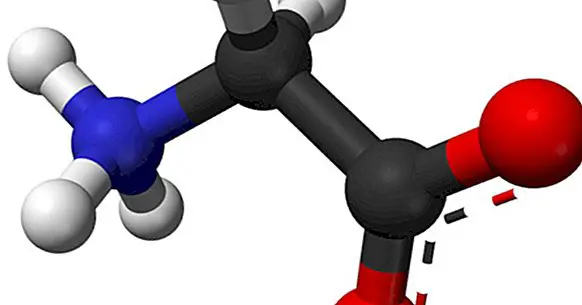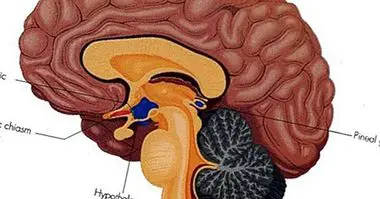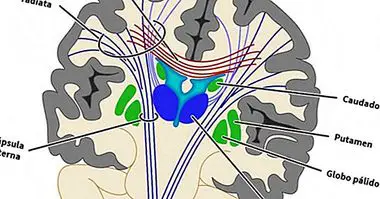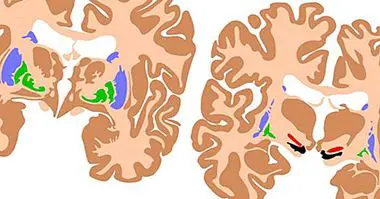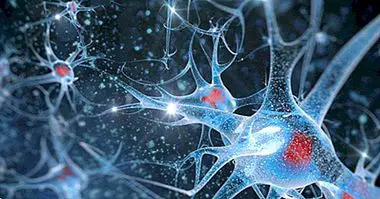Glycine (neurotransmitter): what it is and how it acts on the body
Neurotransmitters are a set of chemicals that the neurons of our brain and the rest of our nervous system use to communicate with each other.
However, not all neurotransmitters have the same effect on our body or on the cells and organs that make it up. For example, the neurotransmitter known as glycine has specific effects on specific receptors, while other substances, such as dopamine or serotonin, affect other regions and produce other psychophysiological repercussions.
In this particular article we will see what is glycine and what are its particularities of this neurotransmitter and amino acid .
- Related article: "Types of neurotransmitters: functions and classification"
What is glycine?
As much as the human brain is the set of organs from which the ability to think rationally arises, the truth is that its functioning is not rational at all. For example, neurons, which are perhaps the most important cell types in this part of the body, function thanks to neurotransmitters, chemical particles that usually circulate throughout the body pretty uncontrollably.
In all this chaos of neurotransmitters, our body is able to minimize the effects of unpredictability and take advantage of the existence of cells that react when they reach a certain amount of a type of neurotransmitter, regardless of whether this has been generated near or far or if It has always circulated through the nervous system or been outside of it.
Glycine, for example, is a neurotransmitter thanks to which the neurons can communicate with each other , but it is also an amino acid from which proteins are created. Without changing shape and properties, this element can be used both to help create and regenerate tissues or cell components and to act as a bridge of chemical communication between nerve cells.
- Related article: "What is the synaptic space and how does it work?"
As an amino acid
In its facet as an amino acid, glycine is the smallest amino acid of those that can be found throughout the human body.
Its structure is very simple, and in fact can be synthesized by the body itself, something that does not happen with the essential amino acids. It is not necessary to ingest glycine doses incorporating foods that contain them into our diet.
As a neurotransmitter
Glycine is released into the bloodstream and begins to circulate through this medium until it crosses the blood-brain barrier and access to the interior of the central nervous system . It is in this space that his work as a neurotransmitter works.
Once inside the context of the nervous system, the glycine is circulating until it is inserted in certain receptors. This combination makes glycine act as a "key" that triggers certain biological processes. But ... what exactly is the mechanism of action of this substance?
The mechanism of action
Glycine has a specific class of receptor that only responds to the presence of this substance. It is the GLyR type receiver. Once this fit has occurred, several valves of the neuron in which the receiver is located begin to work so that chloride ions enter into this nerve cell .
This generates a chain reaction that, depending on the circumstances in which the neuron is located, causes a depolarization stage to occur or not, which causes an electrical impulse to travel throughout the cell until its effects reach other crevices. synaptic (the spaces in which neurons communicate with each other).
- Maybe you're interested: "The 5 types of chemical bonds: this is how matter is composed"
The functions of glycine
Regarding the different processes performed by glycine on neurons, the main ones are the following.
1. Regulation of motor behavior
Glycine, along with other neurotransmitters, intervenes in the regulation of movements making the muscle tone is maintained and that muscle groups can be coordinated to perform coherent actions.
2. Regenerate fabrics
Glycine is practically throughout the body contributing to the development and regeneration of cellular tissues thanks to its action as an amino acid .
3. It has inhibitory effects on the brain
Like other neurotransmitters such as GABA, glycine acts in certain areas of the brain, helping us to enter a state of relative calm, that is, absence of stress. Thanks to this effect, glycine makes it relatively difficult to enter a state of nervous hyperarousal .
However, this does not mean that glycine will numb us.
Four.Contributes to the fluency of cognition
It is believed that glycine secretion helps cognitive functions develop more effectively . For example, remembering or making decisions become more spontaneous and easier to perform, perhaps partly because the absence of excessive stress makes planning when guiding these functions easier.

